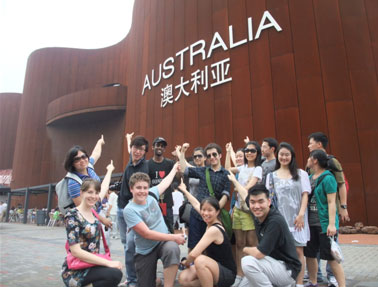Foreign universities seek China growth benefits
- By Geoffrey Murray
 0 Comment(s)
0 Comment(s) Print
Print E-mail China.org.cn, May 1, 2012
E-mail China.org.cn, May 1, 2012
The granting of a license enabling Australia's Monash University to operate a campus on the Chinese mainland is one of the most significant recent developments in the Chinese education sector. It is a move which taps into China's growing spending on research and development.
|
|
|
[File Photo] |
It is the first such license granted in almost a decade following an initial experiment which saw first Nottingham and then Liverpool universities establish a presence in China, in Ningbo and Suzhou respectively. It is widely anticipated that more foreign schools will now be allowed to set up campuses in China; however, it will likely be done in a cautious way with constant monitoring of results.
American universities in particular are anxious to gain a foothold in China. Apart from New York University and Duke University, which already have agreements to establish campuses, the University of California, Berkeley and Georgia Institute of Technology are, I believe, also currently trying to get in.
However, Monash University (motto: "I Am Still Learning') has beaten them all to the punch by teaming up with Southeast University to establish a co-owned graduate school and research institute in Suzhou that could have 1,400 students by 2016. Project 985, established in May 1998 (hence the name) by then-president Jiang Zemin, was set up to develop China's tertiary education sector and create "world class universities". Southeast is among the 39 "Project 985" universities in China receiving preferential government funding under the program.
Although only founded in 1958, Monash has shown great vigor by powering its way to the forefront of Australian education. It enrolls approximately 39,000 undergraduate and 16,000 graduate students each year, giving it the country's largest student body. It is home to major research facilities, including the Australian Synchrotron, the Monash Science Technology Research and Innovation Precinct (STRIP), the Australian Stem Cell Centre, 100 research centers and 17 co-operative research centers. In addition, it already operates campuses in Malaysia and South Africa, along with a research and teaching center in Prato, Italy, and a graduate research school in Mumbai, India.
The Suzhou campus, to be completed by this October, is located in the Suzhou Industrial Park, a longstanding and highly successful center for R&D involving a joint venture between the governments of China and Singapore.
The graduate school will teach in English and will initially focus primarily on science and engineering, but will also include linguistics; later, the range of disciplines covered will be expanded.
There are two points of great significance related to the Monash-Southeastern project. First, while foreign universities have long been able to offer teaching programs in China in conjunction with local partners, the Ministry of Education has carefully limited the granting of fully-fledged licenses.
Second, foreign universities have shifted their emphasis from the long-held desire to establish a mainland presence in order to recruit large numbers of full-fee-paying graduate students for the home campus to collaboration in basic research and development. The shift is one which ultimately benefits both dies.
It is recognition of the huge efforts China is making to develop its national economy through grooming a cadre of outstanding talent equal to the best anywhere in the developed world. It is calculated that China's spending on R&D has risen to reach a level equivalent to around two-fifths of America's spending. By 2020, it wants to raise spending to 2.5 percent of GDP (it was 1.7 percent in 2009).
For Monash, the Suzhou collaboration enables it to not only build a strong research capacity, but also make industry connections and tap into Chinese academic and student talent. In wider terms, it is an opportunity for Australia to move beyond its present role as a supplier of mineral resources to Chinese industry - although this has earned it a lot of money - to promote a broader "intellectual relationship" suitable for the 21st Century.
As noted earlier, Suzhou already has a foreign university presence, as the University of Liverpool and Xi'an Jiaotong University opened a completely new university called Xi'an Jiaotong-Liverpool University in the city. It is not just a department or a small branch of a foreign university (there are plenty of those already), but an independent Sino-Foreign cooperative university approved by the Ministry of Education.
It has plans to achieve an eventual annual enrolment of around 10,000 students recruited from applicants with university entrance exam scores (Gaokao) of the first level.
All teaching is in English, since most professors will be foreigners. All students will be offered an option to complete their degrees in Liverpool or Suzhou. The undergraduate tuition fee will be 50,000 yuan per academic year, which is certainly cheaper than a regular foreign education, but certainly more expensive than most traditional universities in China.
Traditionally, China's higher education sector was relatively disengaged from the international arena. The fact that this is now changing is an exciting prospect, not only for young Chinese people seeking a quality education but also for foreign universities, in terms of gaining a better understanding of China.
The author is a columnist with China.org.cn. For more information please visit: http://www.china.org.cn/opinion/geoffreymurray.htm
Opinion articles reflect the views of their authors, not necessarily those of China.org.cn.







Go to Forum >>0 Comment(s)